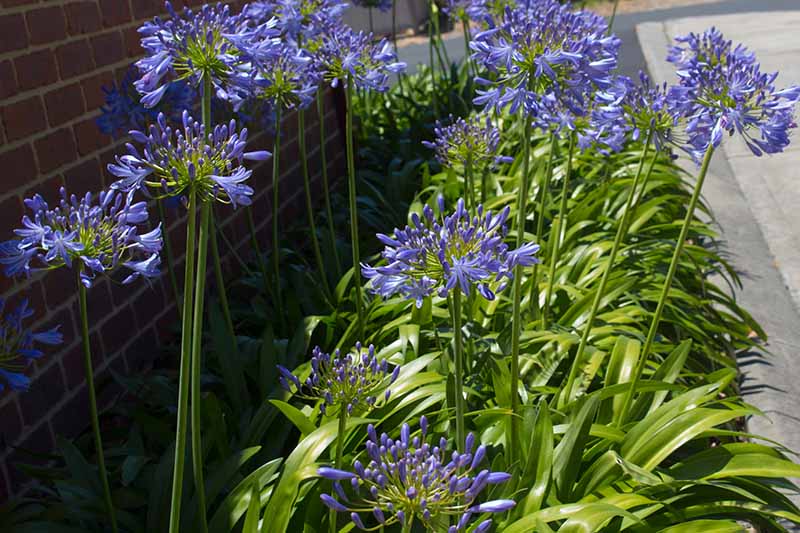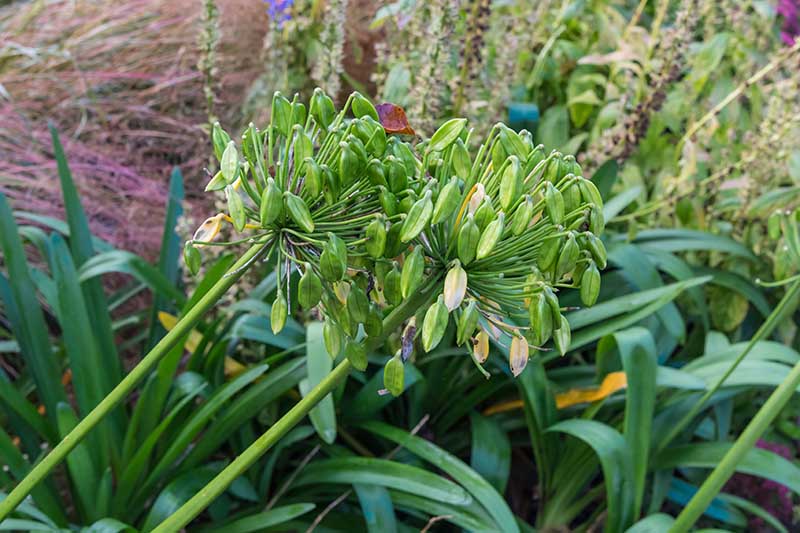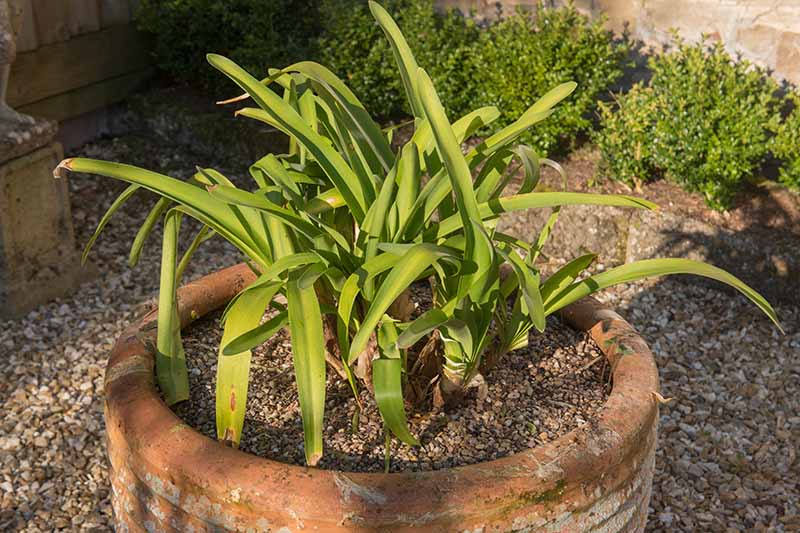Every kid in my tiny elementary school thought I was a strange girl because I kept a jar of sand on my desk.
But it wasn’t just any sand. It was sand my dad had brought back from a trip to Honduras for me, to sate my obsession with turquoise-watered and white-sanded beaches.
I wanted nothing more than to take a dip in the clear, warm waters of the Caribbean.
We link to vendors to help you find relevant products. If you buy from one of our links, we may earn a commission.
I got to travel to Jamaica to see some of the places where my dad and grandparents had lived after leaving Cuba, their home country.
And I was also introduced to a thrilling array of plants and fruits I’d never seen before: slimy-sweet guineps, purple-white star apples, stately birds of paradise, and violet clumps of agapanthus.
The orchards and gardens of the island were unforgettable. Sadly for me, most of the gorgeous vegetation that flourishes in warm places like Jamaica fails to grow here in Alaska.
But many of these plants thrive in places where my family lives, like southern California and Arizona.
And if you live in USDA Hardiness Zones 6-11, this guide can help you try your hand at growing graceful, cheery agapanthus flowers.
The name Agapanthus comes from the combination of the Greek words agape (love) and anthos (flower).
With their lance-like leaves and tall, three-foot stems, spring- and summer-blooming agapanthus reminds me of allium flowers – which makes sense, since they’re in the same botanical family.
They also remind me somewhat of lilies, with their upright stalks and round umbels of trumpet-shaped blooms.
Though they’re not in the same family as lilies, agapanthus are often called “lily of the Nile” or “African lily.” In South Africa, they’re also called blue lily, isicakathi by the Xhosa people, and ubani by the Zulu.
The first reason for these names is that the flower is native to the southern African countries of Swaziland, Mozambique, South Africa, and Lesotho; the second is that in the 1900s, botanists originally classified the appealing flower as a member of the Liliaceae family.
The most prominent species within the lonely Agapanthus genus are A. africanus, A. praecox, A. orientalis, and A. inapertus. Dozens of cultivated and naturally occurring hybrids are derived from these species. Most cultivars feature blooms in shades of blue, violet, and white.
And while the flowering plant is native to southern African countries, it has naturalized all over the world, including in the United States, Jamaica, Australia, New Zealand, Mexico, and the UK.
In fact, this plant naturalizes and spreads so well and is so resistant to pests, disease, and death in general that some gardeners consider it a weed.
But others value its tenacity: in hot desert regions of the world, it’s often the only green for miles. It’s also somewhat fire-resistant. While it does burn eventually, the thick, sap-filled leaves take a long time to do so.
Not much is known about the history of this plant, but at some point in the middle of the 17th century traders brought evergreen varieties from the southern African coast to Europe – and later to the US. In the 19th century it was introduced to Australia and New Zealand.
The deciduous type of agapanthus wasn’t discovered by colonists (though it was well-known to local people) until the early 18th century. Unlike the coastal evergreen variety, deciduous species grow wild in the mountainous regions of southern Africa.
As a result, deciduous cultivars thrive in areas with cooler winter temperatures. Think USDA Hardiness Zone 6.
But evergreen cultivars suffer in any type of cold and are best grown in Zones 8 through 11, unless you’d like to keep them as houseplants for part of the year.
While evergreen varieties can’t stay outside during the winter, they make excellent indoor potted plants during the cold season.
People in some cultures use the rhizomatous root system for medicinal and spiritual purposes. Xhosa women of South Africa make a necklace out of the roots to help keep pregnant women and their unborn babies safe from harm.
Zulu women put the plant’s anti-inflammatory properties to good use by making traditional medicine to alleviate chest pain, heart disease, coughs, and edema.
With its elegant flower clusters rising above arching green foliage agapanthus makes a gorgeous addition to gardens and landscapes. However this perennial plant has specific care needs to help it thrive. Use this comprehensive guide to master agapanthus plant care and enjoy lush, flowing plants.
Agapanthus Plant Basics
Native to South Africa, agapanthus grows from rhizomes or bulbs that produce clumps of strappy green leaves and rounded clusters of tubular blue or white flowers on tall stalks. The evergreen foliage provides attractive structure year-round.
There are many agapanthus varieties to choose from with bloom colors ranging from deep blue purple to pristine white. Dwarf types like ‘Peter Pan’ stay under 2 feet tall while larger varieties can reach 4-5 feet high.
Ideal Growing Conditions
-
Sunlight – Agapanthus thrives in full sun to partial shade. At least 6 hours of direct sun is ideal. More sun means more blooms.
-
Soil – Well-draining loamy soil enriched with compost is preferred. Avoid soggy, clay soil.
-
pH – Aim for a neutral to slightly acidic pH around 60-7.0
-
Zone – Agapanthus grow best in USDA Zones 8-11 but can be grown in pots and brought indoors in colder climates.
Planting Agapanthus
Early spring is the optimal time to plant agapanthus. Follow these tips for success:
-
Plant agapanthus rhizomes or small starter plants. Space 12-18 inches apart.
-
Prepare soil by mixing in 2-3 inches of compost to improve drainage.
-
Dig holes the same depth as the root ball and 2 times wider.
-
Set the rhizomes or plants in the holes with the top just above soil level. Agapanthus are heavy feeders, so mixing some slow-release organic fertilizer into the planting holes can give them a boost.
-
Backfill holes and water thoroughly after planting.
-
Mulch around plants with 2-3 inches of bark chips or pine straw to help retain moisture.
Watering Needs
-
Established agapanthus plants are quite drought tolerant, but regular deep watering helps growth and flowering.
-
Water plants 1-2 times per week in the absence of rainfall, providing about 1-2 inches of water. More during hot, dry periods.
-
Allow soil to partially dry between waterings. Avoid wet feet.
-
Water early in the day so leaves have time to dry before nightfall to prevent disease.
Fertilizing
-
Feed agapanthus monthly during the active growing season with a balanced liquid fertilizer.
-
In spring, use a blooming fertilizer to boost flower production.
-
Work a 2-3 inch layer of compost around plants in early spring and fall.
-
Avoid over-fertilizing which can cause floppy growth.
Pruning/Maintenance
-
Remove spent flower heads by cutting back to 1 inch above the plant after blooming finishes.
-
Prune out any damaged, diseased, dead leaves/stems as needed to maintain health.
-
Divide large, overcrowded clumps every 2-3 years in fall. Replant divisions.
-
Cut back foliage to 6 inches in cold climates before first frost.
Pest/Disease Prevention
-
Ensure good drainage and avoid wet leaves to prevent fungal issues.
-
Treat any fungal issues quickly with fungicides labeled for agapanthus.
-
Control slugs/snails, aphids, thrips and other common pests with organic methods like insecticidal soap.
With its rugged nature and low maintenance needs once established, vibrant agapanthus plants can provide carefree beauty in gardens for years to come. A little attention to their preferred growing conditions and regular care will keep these perennials looking their best.
:max_bytes(150000):strip_icc()/agapanthus-growing-guide-7368912_hero-a3585e4f9ffe4b99a73c7ad8eb4ebe48.jpg)
How to Grow Agapanthus Flowers
If you pick up a potted lily of the Nile from a nursery, or you’re ready to set out the plants you started from seed, plant them out in the fall or spring.
Pick a location in full sun or part shade. Particularly in hotter areas, these plants can benefit from some afternoon shade.

Dig a hole just deep and wide enough for the root ball, and set it inside. Backfill and provide one inch of water per week, until the plant is established and you see evidence of new growth.
After that, slow watering to half an inch every week. Avoid overhead watering whenever possible, and consider using drip irrigation to prevent spraying excess water on the foliage, which can lead to fungal infection.
If you’re planting several of these beauties together, make sure to place them 24 inches apart, as they’ll spread up to 36 inches as they mature.

Don’t worry if they all eventually start rubbing their long, skinny elbows together. This means they’ve got a large, extra-tangly group of rhizomes supporting them from below the soil, and they love this type of closeness.
These flowers can thrive in any soil pH between 5.5 and 7.5, and they don’t need much fertilizer.
A dose of a 5-5-5 NPK fertilizer applied in the spring, and then again two months later, is enough to keep them happy for a whole year.
- Make sure plants get plenty of sun
- Provide organically-rich, well-draining soil
- Water one inch a week until established, and then slow to half an inch
Knowing when and how to prune and maintain your agapanthus can keep plants healthy and vigorous, and also prevents them from becoming invasive.
The most important thing to do is watch the blooming flowers closely. As the flowers start to die back, deadhead them to prevent them from going to seed.
If they develop seed pods before you can catch them, it’s important to remove the entire head before the pods can open and fling seeds all over your yard and beyond.

You’ll need some gloves and a pair of pruning shears. You can then dispose of the pods in the garbage. Just be sure not to dump the flower heads anywhere that they could potentially get outside and start spreading in places where you don’t want them.
Deciduous varieties will go dormant in the fall, but you’ll want to let the leaves remain on the plant until they’re completely dead and brown.
This allows the leaves to continue to photosynthesize and send energy into the rhizomes for winter storage.
Once all the leaves are brown and dead, gently pull or cut them off the plant.
Come springtime, the plant will produce new foliage and flowers, aided by the stored energy reserves.
If your agapanthus are healthy with lots of fresh foliage every spring for deciduous cultivars, or year-round for evergreens, there’s no need to divide them.
But if you notice patches of yellowed, dead leaves, or if the plant is not flowering, it might mean the roots are too congested.

To fix this issue, divide the plant, according to the instructions described above.
It’s recommended to divide deciduous varieties every six to eight years, and evergreen types every four to five years.
You can learn more about dividing perennials in this guide.
There are a large number of agapanthus cultivars available in a variety of different colors.
Here are three of my favorites.
To set off your lighter agapanthus with something lovely and dark, try ‘Black Pantha’ (A. orientalis), which features black buds that open into dark violet flowers.
This evergreen cultivar grows best in Zones 8 to 11 and grows up to 36 inches tall. Best of all, the blooms can last up to two weeks in a vase!
You can find plants available at Burpee.
Do you love your balmy clime but secretly wish snow fell at least sometimes? Fear not, because Agapanthus x. ‘Galaxy White’ is here to deliver five-inch, snow-white globes of flowers – without all the cold that comes with real snow.
These deciduous hybrid beauties reach heights of up to 44 inches, and thrive in Zones 6-11.
Find either a bare root or a potted plant available at Burpee.
If you need a starry-eyed pick-me-up, plant deciduous Agapanthus x. ‘Little Galaxy’ in any garden from Zone 6 to 11.
The light indigo flowers burst from the green stems with a joy you can’t help but share when you look at them.
Reaching a height of just 24 inches, ‘Little Galaxy’ is smaller than the typical 36-inch cultivars, but its two- to three-inch globes of blossoms are the same size as those of some taller varieties.
The bell-shaped flowers feature a dark blue stripe down the center of each petal for a gorgeously textured look.
Find bare root plants available at Burpee.
Want More Options?
Check out our “25 of the Best Agapanthus Varieties for Your Garden” for more cultivar selections.
Managing Pests and Disease
Remember when I said that agapanthus resists many afflictions, including death itself?
While those with invasive clumps may bemoan this fact, it does have an upside for gardeners who love them: they are reliably pest and disease resistant.
Deer don’t trouble them, and they’re poisonous to rabbits, who will naturally give them a wide berth.
The plants can sometimes fall prey to fungal diseases like powdery mildew, botrytis, or anthracnose, but if you avoid overhead watering, these usually won’t be a problem.
If you do notice the white spots of powdery mildew, the silvery coating of botrytis, or the telltale brown spots of anthracnose, remove affected leaves and spray the rest of the plant with a copper fungicide, like this one from Arbico Organics.
Another issue that can develop is root rot. Are the leaves turning yellow and ceasing to grow? Root rot, caused by various species of bacteria and fungi that thrive in wet, boggy soil, might be the culprit.
Resist over-watering, as plants may develop root rot as a result. By providing well-draining soil and the appropriate amount of moisture, you’ll likely avoid any issues.
You can read more about identifying and treating agapanthus diseases here.
As far as pests go, keep an eye out for slugs and snails.
They don’t tend to kill the plant, but they do chew through the leaves and can affect its overall health.
My favorite anti-slug weapon is Corry’s Slug and Snail Killer, available from the Home Depot.
Caring for agapanthus – Golden Rules
FAQ
How to keep agapanthus blooming?
What is the best fertilizer for agapanthus?
Can you use Miracle-Gro on agapanthus?
Where do agapanthus grow best?
